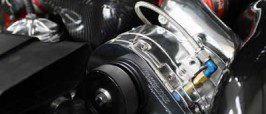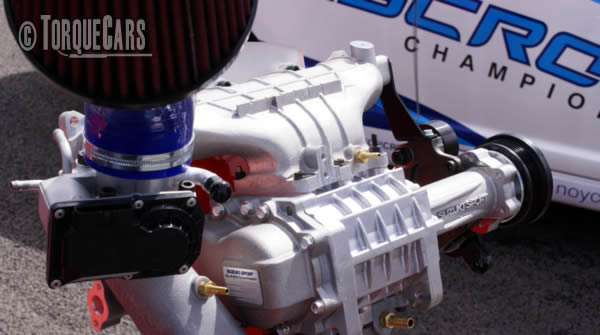Twincharging your engine
"Twice as good?"
It's probably struck everyone at some point that rather than just have one turbocharger/supercharger you could have two so we'll look at the topic of twincharging today and get the low down on this tuning development.
VW were one of the first mainstream car companies to introduce a twin charged engine but they were not the first and it's something that has been played with over the years an early notable integration was by Lancia back in the 80's on the Delta S4 rally car which proved to e a sucessful competition car.
 So what does twincharging do, is it beneficial? Are there any drawbacks to twincharging?
So what does twincharging do, is it beneficial? Are there any drawbacks to twincharging?
Definition: Twincharging is where two turbo chargers are used to doubly compress air into an engine. It could be two turbos, two superchargers or more usually one of each where a supercharger and a turbo are fitted to an engine.
Why use both? You double up the advantages of each for example a supercharger produce linear power gains in relation to the RPM of the engine and pulls from the low end.
But a superchargers will run out of steam at higher RPM levels which is where a turbo charger offers benefits.
A turbocharger takes a while to produce boost and typically needs around 2000rpms to start working effectively when the revs climb it can make large power gains increasing exponentially over the rest of the RPM range.
Benefits of Twincharging
When you have both fitted you quite literally have the best of both worlds, lots of low down power and plenty of extra boost in high RPM levels.
The reason for doing this is that in applications where you need loads of boost and don't have a lot of air flow until the revs increase like in diesel engines and small petrol engines you need a supercharger to pull more air in whilst the engine spools up the turbo.
No turbo will flow 30 lbs/min at 40 psi. So if you use two and keep both of the turbos or supercharger and turbo operating in their efficient range you can more than double the effectiveness of each.
You'd typically have the smaller of the 2 making loads of boost pressure from low speeds (small turbo or supercharger) and then the second larger turbo will be fed the compressed air, and will be able to compress it even further thanks to compounding.
So the effect of two stages of compression will actually mean the air compression is much higher than that just adding the two compressors boost amounts together. For this reason you can get a substantial boost increase from relatively low cost components. (10psi Turbo + 10psi supercharger will flow just under 30psi of boost!)
FYI: In the second compression phase you are compressing air that has already been compressed.
Most Twincharging applications will follow a few common routes.
- Asynchronous or Series, where both work together simultaneously. This is probably one of the easiest set ups to build with just one intake.
- Inline where one is fed from a primarily air compressor (IE: Supercharger feeds a Turbocharger but the turbo is only bought online at a set RPM range)
- Sequential setups, as used by the VAG group where the supercharger provides boost at low RPM and the turbo takes over at a set point into the higher end of the RPM range. A diverter or electronic relay is used to cut between the supercharger and turbocharger.
Cheap superchargers and turbos can be found in your local breakers yard. The trick is getting them plumbed into your engine and working effectively. If engine bay space is limited this may restrict your options, although relocating the battery to the rear can free up some vital room.
So how do you create a Twincharging application for your car?
Ideally your car will already have a turbo, so essentially will be strong enough to cope with twincharging and you'll boost the low end pre-turbo part of the rev range, and benefit from higher boost as the RPM rised.
Our members have played around with different set ups and Claymores Turbo Volvo is a good example of what can be achieved quite easily. His set up takes the output of compressed air from the turbo and then uses the supercharger to compress this further.
Obviously there is quite a large heat build up issue so a larger intercooler is a pre-requisite.
You might use an intercooler at each stage, others stick with a larger capacity intercooler and these can always be sprayed with water or nitrous to further reduce the intake temperatures after the compression phase.

Roots superchargers work best in this set up according to our members so it is worth sourcing an old Roots charger from your breakers yards and finding a mounting point for it in the engine.
A screw supercharger would work as you just need a positive displacement but there will be issues present that you don't get on a Roots setup.
You could argue that having 2 compressors in the intake will impede flow rate.
However the key is that the compressed air from one is further compressed in the second more than making up for any restrictions introduced. Inline setups use separate paths for each charger so they are not flowing through one another and this avoids the "restriction" debate altogether.
The trick after you have plumbed in the second compressor is getting the mapping and air fuel ratios right. Failure to get this right can lead to over fuelling and/or detonation in the engine. A twin charged engine is best set up on a rolling road with proper diagnostic equipment and most cars will need an aftermarket ECU to cope with the extra mapping requirements.
Cautionary note: Twincharging be careful with the throttle body placement:
It needs to go between the Turbo and supercharger if used in compound charging or the back pressure when the throttle is closed at high revs can destroy the supercharger!
You will also need to lower the compression ratio of the engine if you want to run higher boost and the overall principles of adding a turbo to a non turbo engine apply to situations where a second charger is added. (This depends a lot on the engines design, how strong it is and if the fuelling can cope ok.)
We are seeing a increase in interest in Twincharging with a few kits coming on to the market for popular turbo engines. A kit will usually provide all the mechanical components you need to get a Twincharger set up and working correctly.
You will still have to get the engine mapping sorted out for best results. For more tips on Twincharging a car we suggest you join our forum and discuss this aspect of tuning with our experienced members.
Please Check out my YouTube channel, we're regularly adding new content...
PLEASE HELP: I NEED YOUR DONATIONS TO COVER THE COSTS OF RUNNING THIS SITE AND KEEP IT RUNNING. I do not charge you to access this website and it saves most TorqueCars readers $100's each year - but we are NON PROFIT and not even covering our costs. To keep us running PLEASE Donate here
If you liked this page please share it with your friends, drop a link to it in your favourite forum or use the bookmarking options to save it to your social media profile.
Feedback - What do You Think?
Please use our forums if you wish to ask a tuning question, and please note we do not sell parts or services, we are just an online magazine.
Help us improve, leave a suggestion or tip
Please watch this video and subscribe to my YouTube channel.
4 Responses to “Twincharging an engine”

 Click to accept YouTube Cookies & Play.
Click to accept YouTube Cookies & Play.
Very good and interesting read but VW was not the first mainstream company. Nissan in 1988 made the Nissan march super turbo which was twincharged. they produced 10,000 of the cars which were 930cc to meet the rally regulation.. produced about 110bhp.
I would like to install a turbo Kit on my 320SL M104.991 or a C36 M104.931. someone can help me?
Excellent article. I have 2 X m30b34 engines in 2 X BMW e28’s (an m535i and an OEM m535i, which had an Alpina Australia B10 kit applied, to which I had a Haltech engine management put on). Twin charging would be serious power, torque. I’m a 60 year old Australian and love the idea of modifying cars and engines (older brothers when I was growing up were modifying EH Holdens).
I have the ea888/3 non mqb version and am looking to find out if there as ever a is20 or 38 designed to work with the reverse layout turbo as compared to mainstream MQB disposition. Would like to try a IS 20 or 38 but not keen on converting opver to full mqb as I already have full bolt on and boss turbo upgrade. Looking for a more low end torque profile now that I have figured out the tuning on the simos platform.